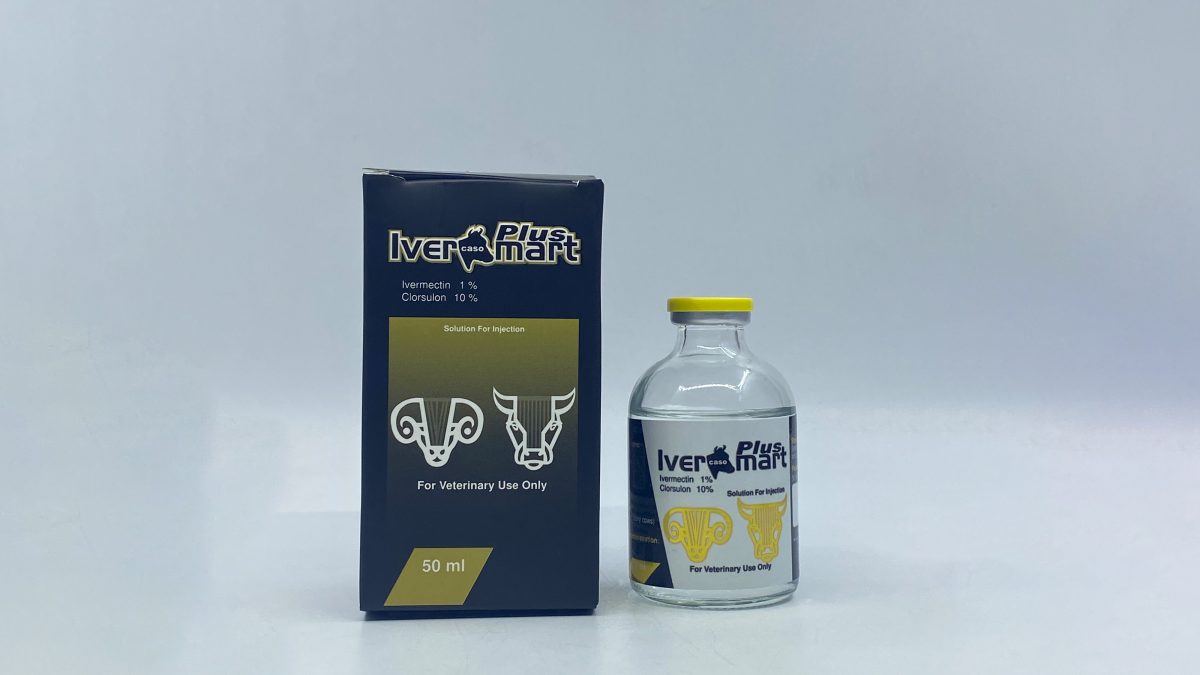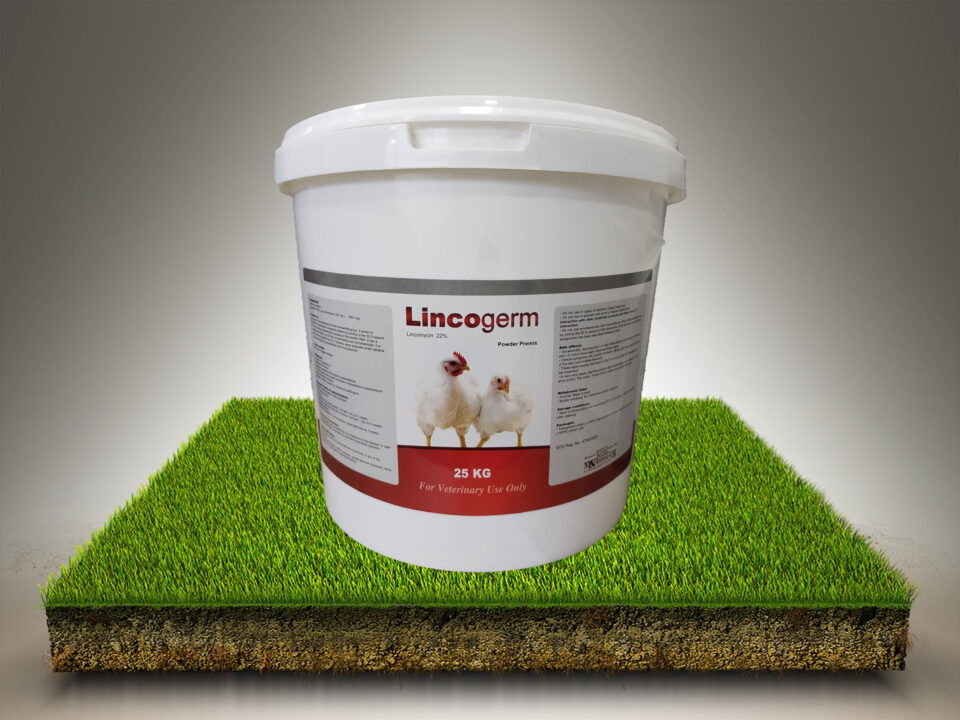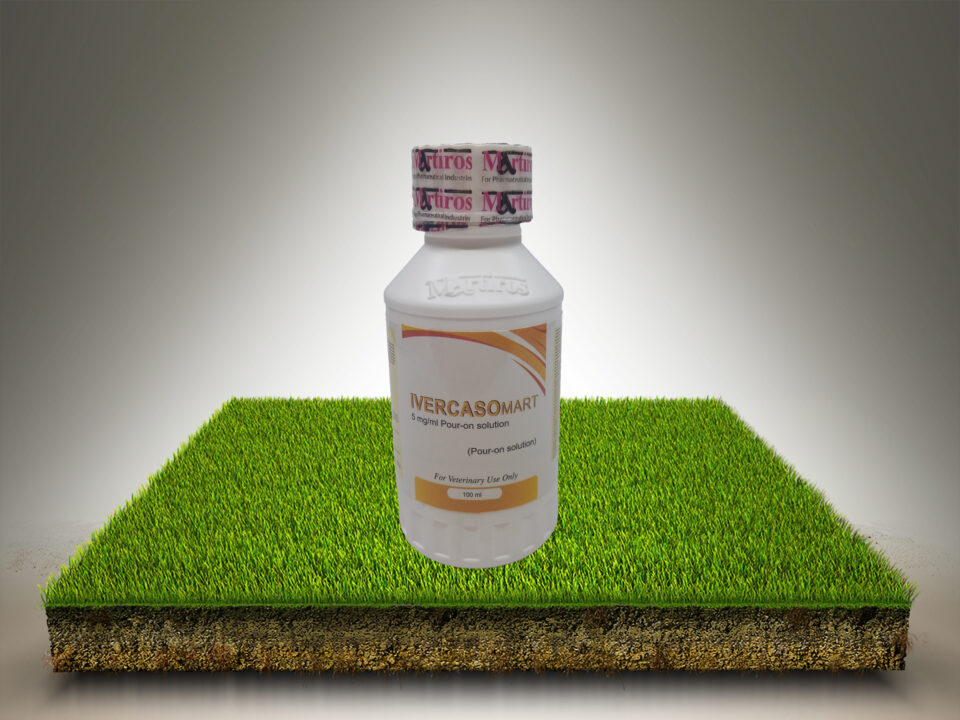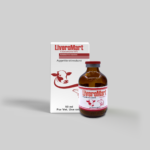
LiveroMart
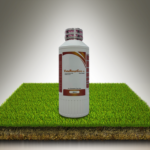
VetaRespicare 10%
Injectable solution
(For vet. use only)
Composition :
Each 100 ml contains:
Ivermectin 1 gm
Clorsulon 10 gm
Properties:
Ivermectin is a member of the macrocyclic lactone class of endectocides which have a unique mode of action. Compounds of this class bind selectively and with high affinity to glutamate-gated chloride ion channels which occur in invertebrate nerve and muscle cells. This leads to an increase in the permeability of the cell membrane to chloride ions with hyperpolarization of the nerve or muscle cell, resulting in paralysis and death of the parasite. Compounds of this class may also interact with other ligandgated chloride channels, such as those gated by the neurotransmitter gamma-aminobutyric acid (GABA).
The margin of safety for compounds of this class is attributable to the fact that mammals do not have glutamate-gated chloride channels, the macrocyclic lactones have a low affinity for other mammalian ligand-gated chloride channels and they do not readily cross the blood-brain barrier.
Ivermectin act against Gastro-intestinal roundworms (adult and fourth stage larvae, L4), Lungworms (adult and fourth stage larvae, L4), Warbles (larval stages), Mange Mites and Lice.
Clorsulon inhibits glycolytic enzymes of Fasciola hepatica (3-phosphoglycerate kinase and phosphoglyceromutase). This enzymatic inhibition effectively blocks the Embden-Myerhof glycolytic pathway and thereby deprives the fluke of its main source of metabolic energy.
Indications:
For the treatment of mixed trematode and nematode or arthropod infestations, due to adult and immature roundworms, lungworms, warbles, mites, lice and liver fluke in cattle.
Gastro-intestinal roundworms (adult and fourth-stage larvae):
Ostertagia ostertagi (including inhibited larval stages)
O. lyrata
Haemonchus placei, Trichostrongylus axei, Trichostrongylus colubriformis, Cooperia oncophora, Cooperia punctata, Cooperia pectinata, Bunostomum phlebotomum, Oesophagostomum radiatum, Strongyloides papillosus (adult), Nematodirus helvetianus (adult), Nematodirus spathiger (adult).
Lungworms (adult and fourth-stage larvae):
Dictyocaulus viviparus
Liver fluke (adult):
Fasciola hepatica
Warbles (parasitic stages):
Hypoderma bovis, Hypoderma lineatum
Mange mites:
Psoroptes bovis, Sarcoptes scabiei var. bovis
Sucking lice:
Linognathus vituli, Haematopinus eurysternus
The product may also be used as an aid in the control of the mange mite Chorioptes bovis, but complete elimination may not occur.
Target Species:
Cattle (Excluding dairy cows)
Dosage & route of administration:
Route: To be administered by subcutaneous injection.
For active ingredient:
Cattle (Excluding dairy cows): 200 mcg of ivermectin and 2 mg of clorsulon per kilogram of bodyweight.
Dose for whole product:
Cattle (Excluding dairy cows): 1 ml / 50 kg of bodyweight.
Warnings & precautions:
Divide doses greater than 10 ml between two injection sites to reduce occasional discomfort or site reaction.
The best time to treat against infections with Hypoderma is immediately after the end of the swarming of the warbles, before the larvae cause damage in the body of the animal (October to November).
Ivermectin is highly toxic to aquatic invertebrates. Treated cattle should not have direct access to ponds, streams or ditches for 14 days after treatment to avoid adverse effects on aquatic organisms.
Contra-indications
- Do not use in non-lactating dairy cows including pregnant heifers within 60 days of calving.
- Not for use in species other than cattle as severe adverse reactions, including fatalities, may occur in dogs for example.
- Do not use by the intravenous or intramuscular route.
- Do not use in animals known to be hypersensitive to the active substance
Do not use in animals producing milk for human consumption. - Do not use in non-lactating dairy cows including pregnant heifers within 60 days of calving.
Adverse Effects:
Transitory discomfort has been observed in some cattle following subcutaneous administration. Soft-tissue swelling and/or slight pain at the injection site has also been observed. These reactions have disappeared without treatment
Withdrawal time:
Meat and offal: 66 days.
Milk: do not use in animals producing milk for human consumption.
Do not use in non-lactating dairy cows including pregnant heifers within 60 days of calving.
Storage conditions:
At temperature not exceeding 30◦C and to be used immediately after opening.
Packaging:
Clear colorless glass type II of 10, 30, 50, 100, 250 and 500 ml with outer label and insert inside a carton box.

